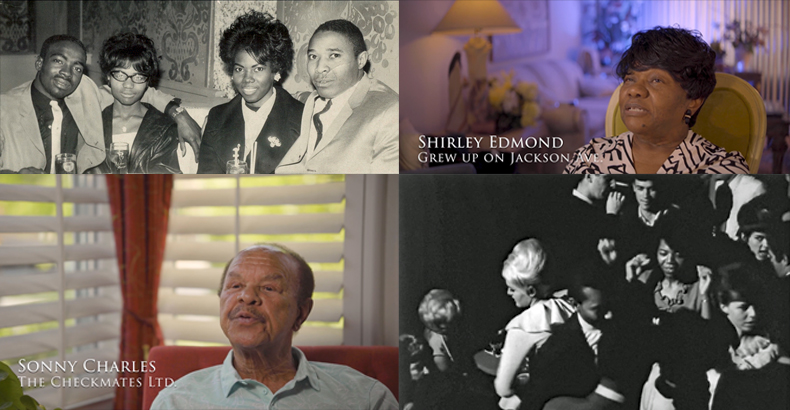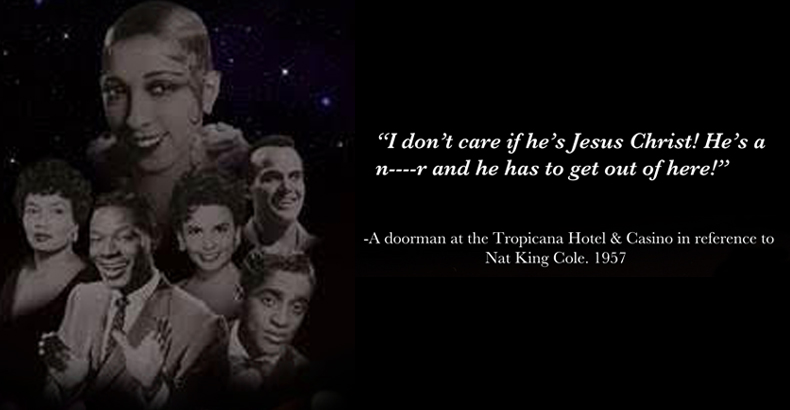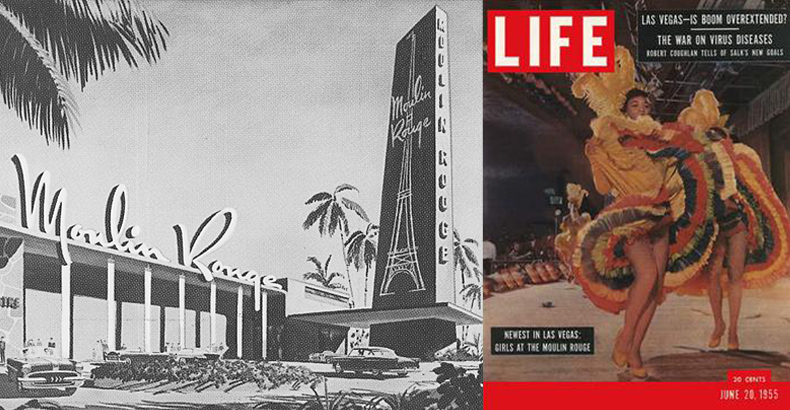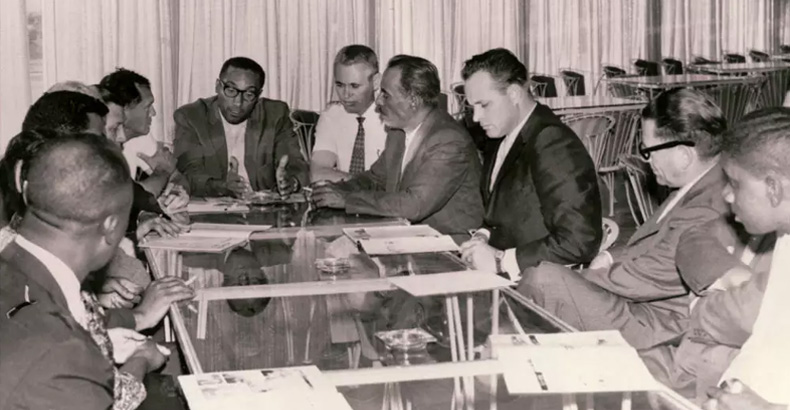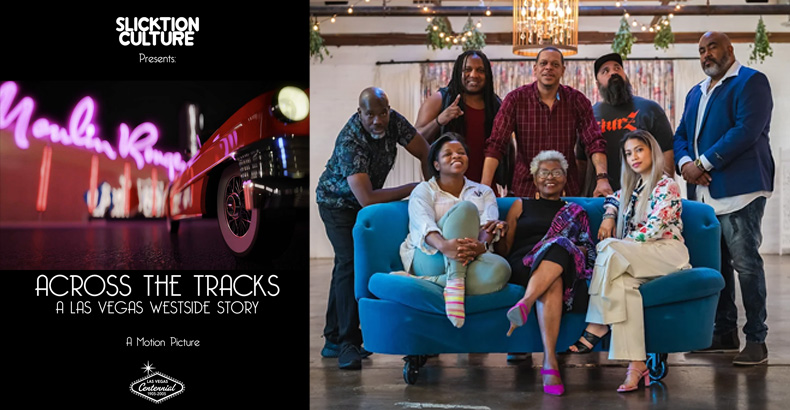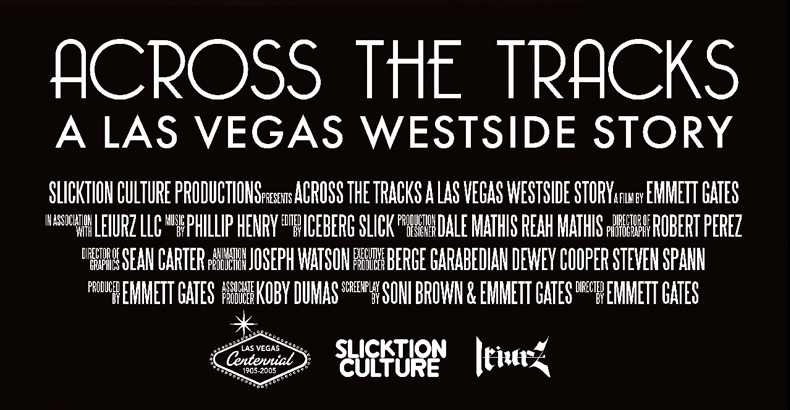The Spanish-American philosopher George Santayana (né Jorge Agustín Nicolás Ruiz de Santayana y Borrás) wrote “Those who cannot remember the past are condemned to repeat it” in his 1905 work, Life of Reason, Reason in Common Sense; which in addition to being paraphrased by Winston Churchill in a 1948 speech to the House of Commons as “Those who fail to learn from history are condemned to repeat it;” was, perhaps most famously, included as an epigraph by William Shirer in 1960’s The Rise and Fall of the Third Reich (the 1961 winner of the National Book Award for Nonfiction). Even Lemony Snicket (the pen-name of author Daniel Handler) wrote “Those unable to catalog the past are doomed to repeat it” in 2006’s The End, the thirteenth and final volume of the popular YA series, A Series of Unfortunate Events. And while I’ve often considered Santayana’s aphorism in the context of the Holocaust, it is no less apt when considering the appalling hatred, discrimination, segregation, and racism faced by Black Americans throughout our country’s history (despite what the Governor of Florida would have you believe).
This is what was percolating in the back of my mind as my friend Heather and I sat in the Showroom at the Plaza Hotel & Casino, on Saturday evening, viewing the premiere of an edited version of Across the Tracks: A Las Vegas Westside Story; native Las Vegan Emmett Gates’s documentary which deftly examines the unique role played by Las Vegas in Black American history; specifically, that of the Historic Westside—the 3.5 square-mile area that is bordered by Carey Avenue, Bonanza Road, I-15, and Rancho Drive—the 118-year history of which has remained untold. Until now.
There, in the Plaza’s wonderfully OG showroom (where, back in 2010, I served as a judge for the 20th annual Miss Exotic World Pageant), during the red carpet reception that preceded the screening, Las Vegas City Councilman Cedric Crear and Clark County Commissioner William McCurdy II each took to the stage and spoke to the importance of the film, as well as their respective perspectives on the history of the Westside community; with Gates noting the significance of the premiere event being hosted by the Plaza, as the hotel-casino stands on the land at #1 Main Street, where from 1905 until 1970 the Union Pacific railroad’s train depot stood, and where, in 1906, the city’s first land auctions were held.
Producer/Director Gates is a storyteller, and the story he’s telling—filled not just with segregation and discrimination, but also indefatigability of spirit and eventual triumph—is that of the thousands of Black Americans who migrated to Las Vegas (as far back as the ), and were forced to live, quite literally, on what was deemed the wrong side of the tracks. To wit, the area to the west of the Union Pacific railroad tracks, as opposed to the easterly side, where Senator William A. Clark and the Union Pacific Railroad established the Las Vegas townsite (on what is today Downtown Las Vegas). *
Through the use of archival footage, as well as in-person interviews with accredited historians, lifelong residents, and community leaders, the film tells the expansive history of Las Vegas’s Historic Westside, in its entirety. From the area’s establishment at the turn of the twentieth century; to the legalization of gambling in 1931, the repeal of Prohibition in 1933, and the completion of Boulder Dam in 1935; to the raging discrimination that earned Las Vegas the decidedly uncomplimentary moniker “the Mississippi of the West;” to the Jim Crow era (which persisted in Las Vegas until the “Moulin Rouge Agreement” of March 1960) during which the Strip’s many Black headliners, including Louis Armstrong, Ella Fitzgerald, Nat King Cole, Sammy Davis, Jr., Lena Horne, and Harry Belafonte, were prohibited not only from staying in or gambling at the hotel-casinos at which they were performing, but often from even entering through the front door!; and which resulted in the boom of the ‘Black Strip’ on Jackson Avenue in the 1940s and ‘50s, and later the opening (and closing) of the aforementioned Moulin Rouge Hotel—to more recent decades, including the during which the area was gripped by the converging blights of riots (most notably the West Las Vegas riots of 1992, which were sparked by the acquittal of the four LAPD officers involved in the horrific beating of Rodney King, and resulted in one death and more than $6 million in damages), crime, drugs, and gangs; to today, full of hope, thanks to new efforts by dedicated longtime residents and city leaders, alike, who have been leading the charge for a renaissance.
And, thanks to state-of-the-art CGI technology, the documentary takes audiences back in time to see such epochal parts of the Historic Westside as Jackson Avenue and the legendary Moulin Rouge, as they were in their prime.
The full version of Across the Tracks: A Las Vegas Westside Story will be screened for the public, on Wednesday, March 06, at the Galaxy Theatres at the Boulevard Mall.
Funded by a grant from the Commission for the Las Vegas Centennial, Across the Tracks: A Las Vegas Westside Story is narrated by Gates and the captivating Claytee D. White, the inaugural director of the UNLV Libraries’ Oral History Research Center. Following are some of the documentary’s notable interview subjects: Tyler D. Parry Ph. D. (Professor of African American Studies, UNLV), Michael Green Ph. D. (Professor of History, UNLV), Bob Stoldal (Las Vegas historian, journalist, and media executive), U.S. Congressman Steven Horsford, Clark County Commissioner William McCurdy II, Las Vegas City Councilman Cedric Crear, Sonny Charles of The Checkmates, Skip Trenier of The Fabulous Treniers, Anna Bailey (an original performer at the Moulin Rouge), and Norma Tolbert (an original performer at the Moulin Rouge, in her first ever on-camera interview).
Across the Tracks: A Las Vegas Westside Story
Galaxy Theatres | The Boulevard Mall
Wednesday, March 06
Click HERE for info
Get into it!
#HistoricWestside
[Editor's Note: Sen. William A. Clark of Montana (1839-1925), the Gilded Age robber baron-cum-mining/banking/railroad magnate—after whom Clark County, NV takes its name—established Las Vegas as a maintenance stop for his San Pedro, Los Angeles, and Salt Lake Railroad, and subdivided 110 acres to the east of the railroad tracks into 1,200 lots. His youngest daughter, Huguette Clark (1906-2011) was an eccentric recluse who opted to spend the final decades of her life in hospitals (despite not being ill), instead of at any of her numerous sprawling estates; and was the subject of the 2013 bestseller, Empty Mansions: The Mysterious Life of Huguette Clark and the Spending of a Great American Fortune, by Bill Dedman and Paul Clark Newell, Jr.]


